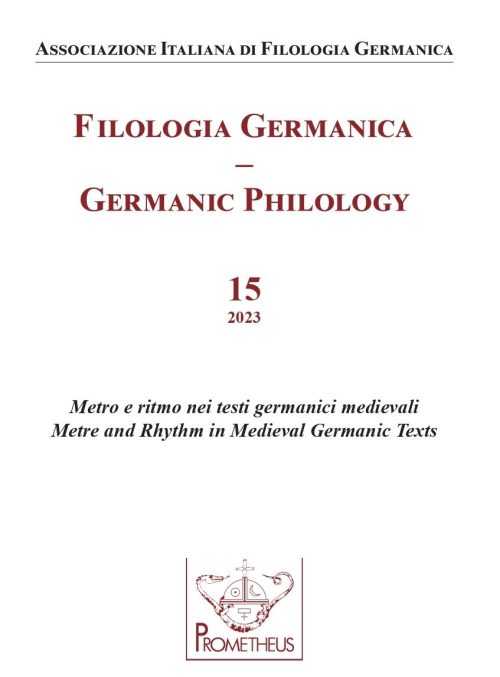Runica Metrica. Die Metrische Gestalt der älteren Runeninschriften und ihre Grundeinheit der Proto-Langzeile
DOI:
https://doi.org/10.14672/fg.v15i.2431Parole chiave:
Old English, Old Norse, early runic metricsAbstract
This article on early runic metrics takes a minimalist standpoint by first taking the position of the Advocatus Diaboli. This means that metrical criteria of the older runic inscriptions until c. AD 500 should speak for themselves without being directly derived from or equated with later language stages with their elaborated metrical systems. In other words, the present approach attempts to avoid constrictions and direct comparisons with the Old Germanic literary languages, especially Old Norse, Old English and Old High German. This is so because the language typology of Ancient Nordic cannot directly be equated with Old Norse or Old English in terms of syllabic metrics. Sievers’ typology (Sievers 1893) is also rejected here as a straightforward tool for analysis, since it is oriented towards the Old Germanic literary languages. This raises the basic question of scientifically verifiable regularities of early runic metrics that meet criteria of validity and reliability. The leitmotif of the following analysis is the fusion and interaction of language, sentence rhythm and alliterative metrics. Not entirely unexpectedly, the Germanic long line, or more precisely the proto-long line, emerges as the basic unit of Ancient Nordic metrics, since it can be relatively reliably verified in a small group of older runic inscriptions.
Pubblicato
Fascicolo
Sezione
Licenza

Questo lavoro è fornito con la licenza Creative Commons Attribuzione - Condividi allo stesso modo 4.0.
CC-BY-SA



